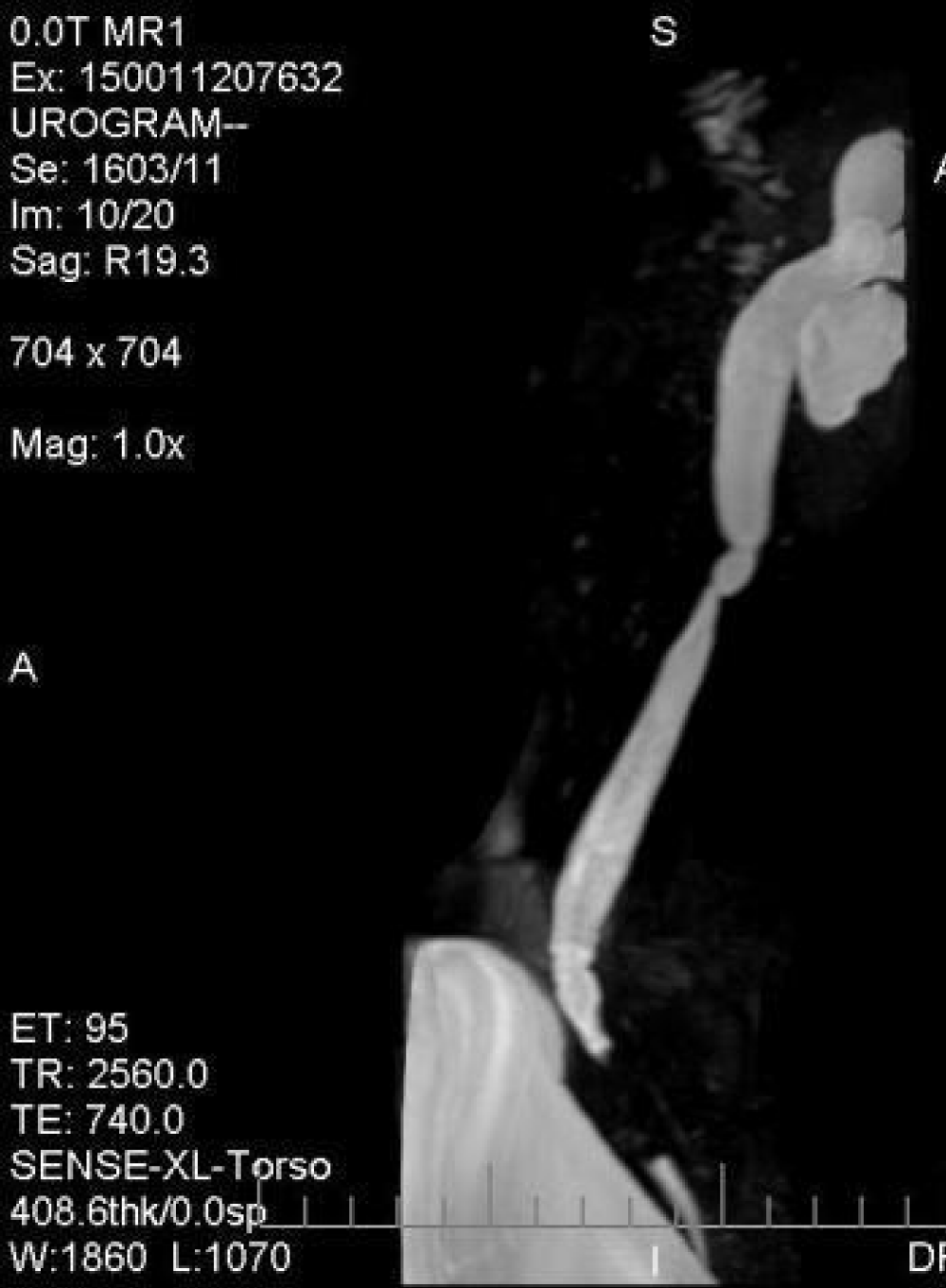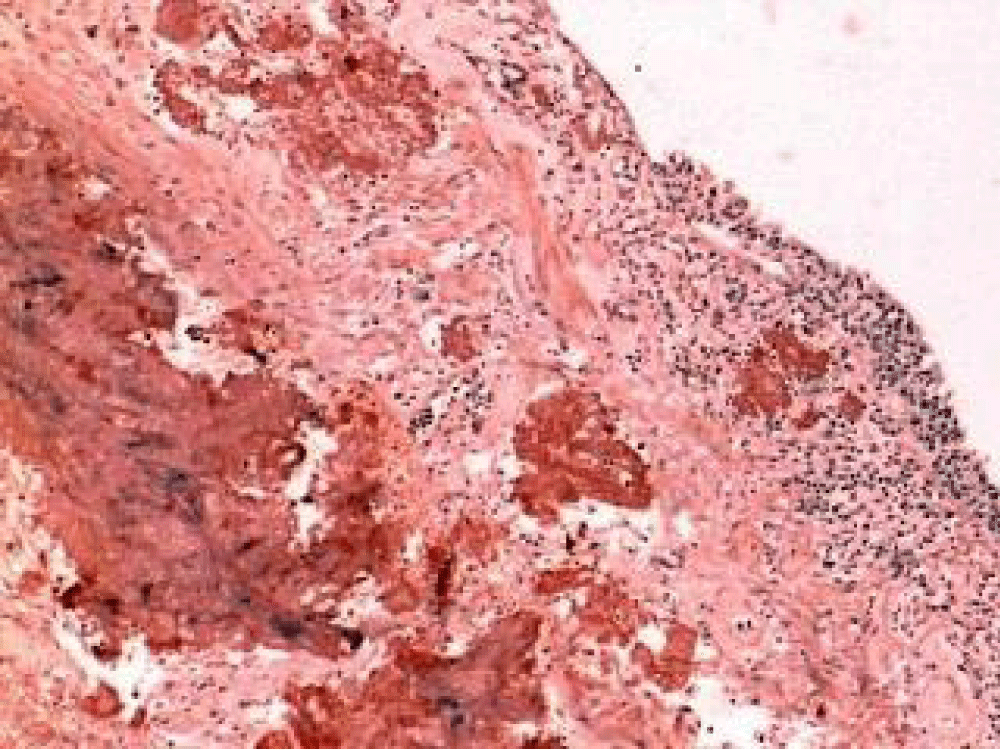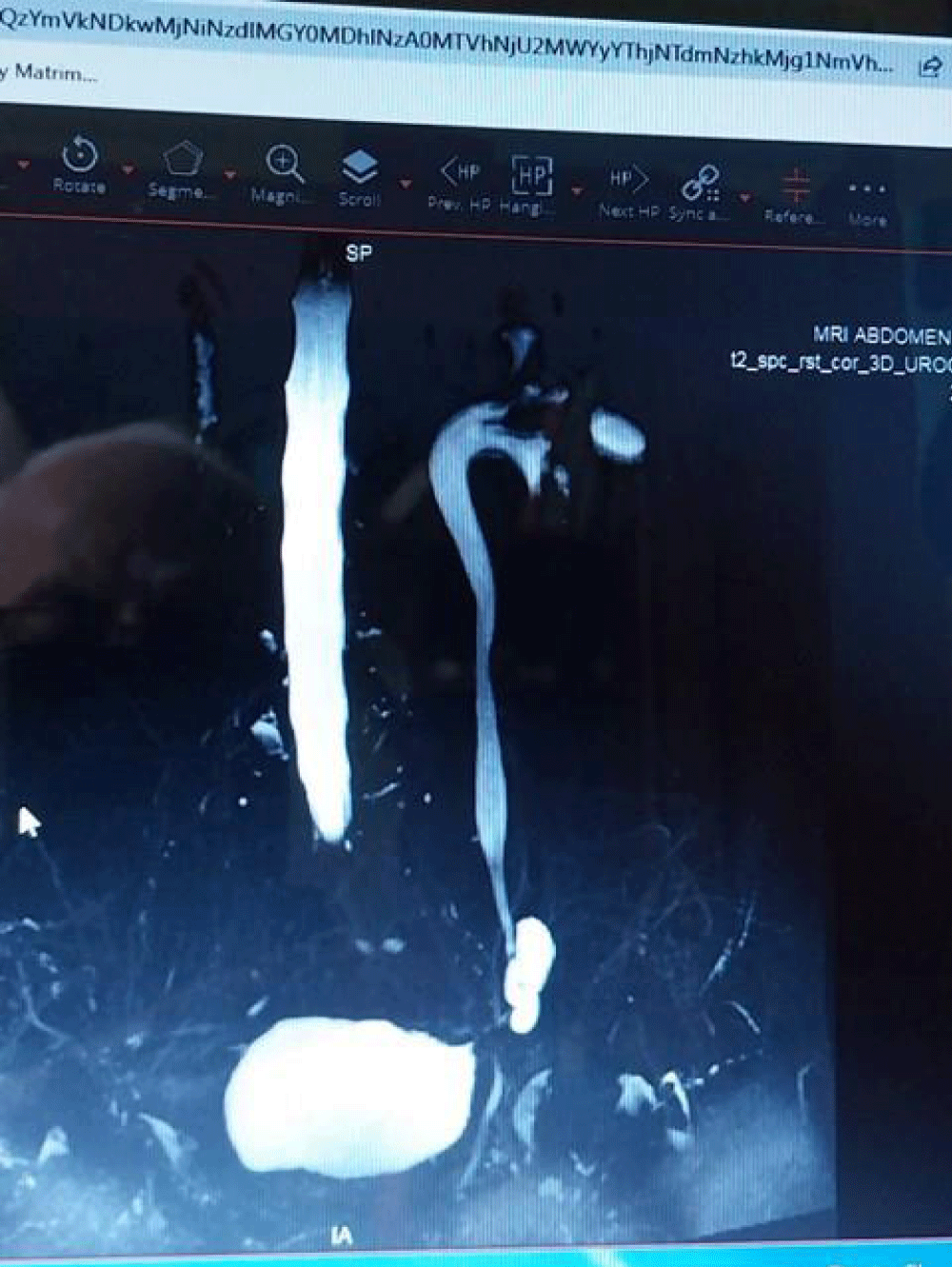Archive of Urological Research
Bilateral Localised Primary Ureteric Amyloidosis
Padmanabha Vijayan*
Cite this as
Vijayan P. Bilateral Localised Primary Ureteric Amyloidosis. Arch Urol Res. 2024;8(2):015-017. Available from: 10.17352/aur.000051Copyright
© 2024 Vijayan P. This is an open-access article distributed under the terms of the Creative Commons Attribution License, which permits unrestricted use, distribution, and reproduction in any medium, provided the original author and source are credited.Amyloidosis is a group of diseases in which insoluble proteins called amyloids deposit in tissues and cause problems with body functions. It is not a form of cancer but is a serious condition. It may be symptomatic or localized. The latter is a rare condition and the affection of the ureter has been reported in fewer than 50 cases so far.
This case is unique because of its presentation with features of a urothelial tumor of the upper tract and bilateral involvement of the ureter. The affection of the ureters was separated by more than a decade. Given the knowledge gained after treating the first lesion, it was possible to anticipate and suspect a similar lesion affecting the other ureter. A conservative and reconstructive surgery was performed with gratifying results.
Introduction
Amyloidosis is a pathological entity, and it may be primary or secondary. Primary amyloidosis manifests without an underlying clinical condition and secondary amyloidosis can occur following chronic inflammatory or neoplastic disease, such as multiple myeloma. Amyloidosis is systemic in 90% to 95% of cases or localized to specific organs in 6% to 9% of cases. The latter is rare and predominantly affects the urinary bladder and may manifest as microscopic hematuria. Ureteric amyloidosis is often mistaken for a urothelial tumor of the upper urinary tract that may be dealt with by radical surgery [1]. While few cases of ureteric amyloidosis have been reported, one unusual and rare case of ureteric amyloidosis with bilateral involvement occurring several years apart is presented here.
Case report
A 36-year-old male initially presented at a hospital in Kolkata, West Bengal India, with bouts of hematuria and right flank pain occurring over 1 year. Laboratory investigations showed normal hematological values, serum creatinine level of 0.8 mg/dL, and normal bleeding and clotting times. His urine showed many red blood corpuscles, a few pus cells, and minimal albuminuria; urine cytology showed no malignant cells. Ultrasound and intravenous urography (Sept 20, 1995) showed a normal left kidney and ureter, but the Right kidney showed deformed and dilated calyces and hydroureteronephrosis up to the level of the L3 vertebra causing obstruction. He went to another major city where the investigations were repeated and the findings confirmed. And he underwent Rt. Nephro-ureterectomy (April 22, 1996).
Histopathology revealed amyloidosis of the renal pelvis and ureter. Serum electrophoresis was negative and X-ray evaluation of the skull and bone marrow was normal. The patient was followed up in 1998 and 2000 and no abnormalities were found.
In 2012, the patient presented at another hospital with complaints of pain in the left loin over 4 months. He had experienced no weight loss and had mild tenderness in his left loin. Laboratory investigations showed a hemoglobin level of 11.6 g/dL and a serum creatinine level of 1.58 mg/dl. Routine examination and urinalysis showed no abnormalities. Ultrasound examination revealed the absence of the right kidney and moderate hydroureteronephrosis on the left side. The ureter was dilated up to a point just below the crossing of the iliac vessels. Given his elevated creatinine values, a contrast study was not performed. Magnetic resonance imaging showed concentric but irregular thickening of the ureteric wall distal to the iliac vessels with a proximal hydroureter and hydronephrosis (Figure 1). With the patient’s history of amyloidosis of the ureter on the right side, a similar lesion involving the left ureter was strongly considered.
Urine cytology, retrograde study, and exploration and reconstructive surgery were planned.
Due to financial constraints and other personal reasons, the patient subsequently came to our hospital for treatment. The planned procedures were executed. Histologic analysis of frozen sections did not reveal any malignancy. About 5 cm of the lower left ureter was found to be considerably thickened, starting from just below the iliac vessels and ending near the insertion into the bladder. The thickened section of the ureter was excised and a Boari reconstruction of the ureter was performed.
The patient made an uneventful postoperative recovery. After the removal of the urinary catheter 12 days post-surgery, the patient was voiding well, and his serum creatinine level dropped to 1.3 mg/dL. He remained asymptomatic when he was followed up 4 months later and his serum creatinine level was 1.1 mg/dL. Twelve years have since passed, and the patient remains symptom-free; his last creatinine level was 1.18 mg. To date, the upper tract (kidney and the ureter) showed no evidence of obstruction proximal to the Boari reconstruction (Figure 2).
Histopathology
The submucosa and lamina propria regions of the excised ureter segment revealed a deposit of hyaline-like material. The interstitium of the muscle and serosa showed focal lymphoplasmocytic infiltrate (Figure 3). Examination of Congo red-stained sections under polarised light showed greenish birefringence. The histology was compatible with amyloidosis of the left ureter. The edges of the resected ureter were free from such changes. Performance of serum electrophoresis showed marginally raised values suggesting chronic infection. Immunohistochemistry is mandatory to distinguish the types of amyloidosis. In this case, however, immunohistochemistry analysis was not performed as it is available only in selected major cities and is also expensive.
Discussion
In 1937, Lehman described the first case of localized amyloidosis of the ureter [2,3]. Fewer than 50 cases have been reported to date, with approximately 75% of cases in women reported in Japan [2,4]. Localised thickening of the ureter due to deposition of the immunoglobulin light chain is characteristic of the disease [5]. Usually, the distal third of the ureter is involved and bilateral ureteral affliction is rare [2,6]. Diffuse thickening of the ureteric wall may be seen in carcinoma, tuberculosis, and schstosomiasis [7] Although the pathogenesis is unknown, chronic urinary tract infection may cause persistent inflammation and localized production of immunoglobulin. The clinical manifestation usually is urinary obstruction.
Diagnosis of amyloidosis is confirmed by histopathological examination using Congo red staining with the exclusion of other aetiologies [8]. Because macroscopic appearance may be indistinguishable from urothelial malignancy (necessitating nephroureterectomy as was initially done on the right side in this case), conservative treatment in the form of local excision and reconstruction following histological evaluation of frozen sections is advised [4]. Treatment with corticosteroids resulting in significant regression of ureteric involvement has been reported, but no clearly defined treatment that is effective in a large number of patients has been established [2]. Intra vesical instillation and Occusive dressing with Dimethyl sulfoxide on the skin have also been reported [9] Earlier studies have reported that in patients with persistent urinary irritative symptoms who do not respond to usual therapy, localized amyloidosis can be considered, especially in women aged between 40 and 70 years [2]. However, the extremely low incidence of localized disease usually results in missed diagnosis.
Conclusion
Diagnosis of amyloidosis is confirmed by histopathological examination using Congo red staining with the exclusion of other aetiologies. Treatment with corticosteroids resulting in significant regression of ureteric involvement has been reported.
- Ali ST, Shah S, Przybysin C. Primary localized ureteral amyloidosis mimicking urothelial carcinoma. Urol Case Rep. 2018;47:24-26. Available from: https://appliedradiology.com/articles/primary-localized-ureteral-amyloidosis-mimicking-urothelial-carcinoma
- Fushimi T, Takei Y, Touma T, Kudoh S, Yamamoto K, Hoshii Y, et al. Bilateral localized amyloidosis of the ureters: clinicopathology and therapeutic approaches in two cases. Amyloid. 2004;11(4):260-264. Available from: https://doi.org/10.1080/13506120400014807
- Diego DS, Carvalho JF. Primary localized amyloidosis of the ureter. Isr Med Assoc J. 2008;10:237-238. Available from: https://pubmed.ncbi.nlm.nih.gov/18494242/
- Mark IR, Goodlad J, Lloyd-Davies RW. Localized amyloidosis of the genito-urinary tract. J R Soc Med. 1995;88:320-324. Available from: https://pubmed.ncbi.nlm.nih.gov/7629761/
- Ergas D, Abramowitz Y, Lahav Y, Halperin D, Sthoeger ZM. Exertion dyspnea and stridor: an unusual presentation of localized laryngeal amyloidosis. Isr Med Assoc J. 2006;8(1):73-74. Available from: https://pubmed.ncbi.nlm.nih.gov/16450762/
- Tsujioka Y, Jinzaki M, Tanimoto A, Nakagawa K, Akita H, Kikuchi E, et al. Radiological findings of primary localized amyloidosis of the ureter. J Magn Reson Imaging. 2012;35(2):431-435. Available from: https://doi.org/10.1002/jmri.22858
- Singh SK, Wadhwa P, Nada R, Mohan VC, Singh P, Jha V. Localized primary amyloidosis of the prostate, bladder and ureters. Int Urol Nephrol. 2005;37(3):495-497. Available from: https://doi.org/10.1007/s11255-005-2088-x
- Seider N, Beiran I, Kaltreider SA. Advanced localized primary conjunctival amyloidosis: surgical rehabilitation using mucous membrane graft implantation. Isr Med Assoc J. 2006;8(6):439-440. Available from: https://pubmed.ncbi.nlm.nih.gov/16833179/
- Hasegawa Y, Kanda H, Miki M, Masui S, Yoshio Y, Yamada Y, et al. [Effective dimethyl sulfoxide (DMSO) occlusive dressing technique for amyloidosis of the urinary bladder]. Hinyokika Kiyo. 2013;59(10):673-676. Available from: https://pubmed.ncbi.nlm.nih.gov/24262710/
Article Alerts
Subscribe to our articles alerts and stay tuned.
 This work is licensed under a Creative Commons Attribution 4.0 International License.
This work is licensed under a Creative Commons Attribution 4.0 International License.





 Save to Mendeley
Save to Mendeley
